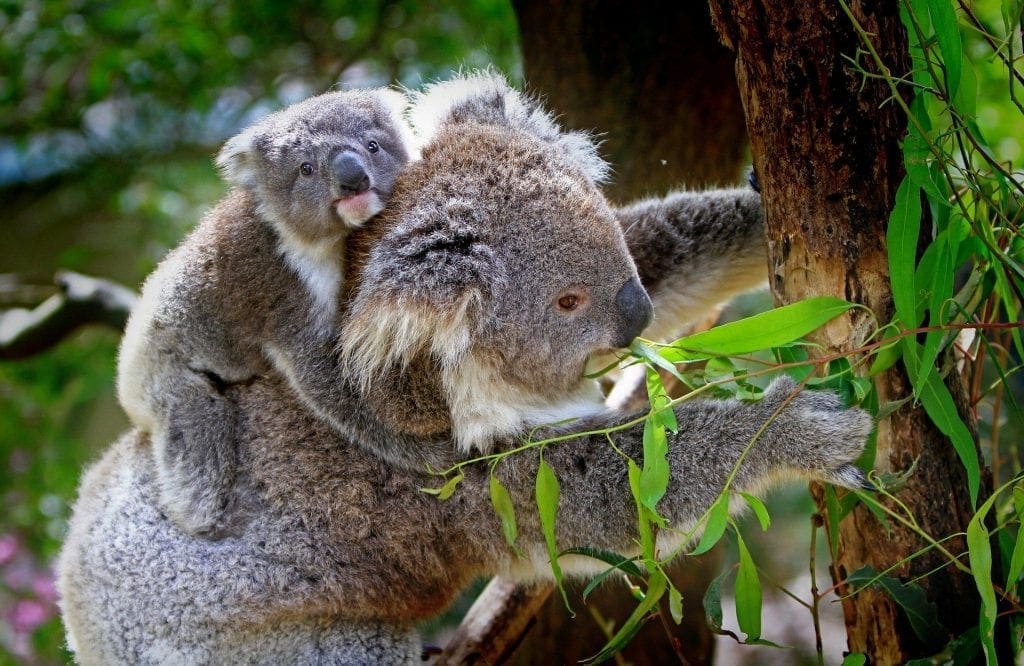Authorities fear that hundreds of koala bears could have died in the huge wildfires tearing across northern New South Wales, Australia.
The devastating fire is thought to have been caused by a lightning strike near the town of Port Macquarie, which went uninspected for multiple days and burned through more than 2,000 hectares of land.
#NSWfires wildlife experts on the NSW mid north coast still waiting to see how many #koalas killed in the bushfire south of #PortMacquarie in a region considered critical koala habitat, fire authorities @NSWRFS to escort experts in once area considered safe. pic.twitter.com/UtgCS298kw
— Danuta Kozaki (@danutakozaki) October 30, 2019
By Wednesday morning (October 30), there were 72 confirmed fires burning across New South Wales, with control still yet to be gained over 38 of them. The inferno ripped through the heart of prime koala territory, including an important breeding ground, and experts fear that it may have harmed a large number of the population.

Sue Ashton, president of the Port Macquarie Koala Hospital said she feared the worst as koalas are ‘terrible’ at coping in a bushfire scenario, 7 News reports. She explained that during a fire koalas tend to climb to the top of a tree and curl up into a ball, meaning ‘flames will just go over the top and singe the outside’ of the creatures.
However, she added that the animals can be burned alive if fires are particularly intense.
Rescuers are unable to search for survivors until Thursday or Friday, but Ashton made clear the loss of life would be a ‘tragedy’.
WATCH & ACT: Crestwood Dv, Lake Cathie area (Port Macquarie-Hastings LGA) There's been an increase of fire activity in area of Long Point Dv & Cooinda Pl, Lake Cathie. Crews in place to provide property protection. Those in the area should enact their bush fire survival plan. pic.twitter.com/C7SomGmsWx
— NSW RFS (@NSWRFS) October 30, 2019
Ashton commented:
The beauty of this particular population is that it’s so genetically diverse that it’s of national significance.
A lot of the koalas are being mixed and cross-bred now… so to lose a large part of that population is very devastating.
She also went on to say that even if some koalas manage to avoid a blaze, they can suffer burns on their paws and claws while climbing smouldering trees, causing injuries that can leave them unable to ever climb properly again.
The hospital, which can house up to 40 koalas, has recruited more than 150 volunteers to deal with the expected influx of injured animals.
Ashton continued:
In a disaster people just switch on and you do what you have to do. No one can control nature, but there’s sadness because we care so much about the koalas.
Koalas are listed as Vulnerable on the IUCN Red List, with their population threatened by urbanisation and habitat destruction.
At 5pm there are 72 fires burning across the state, with 38 yet to be contained. The Crestwood Drive fire near Lake Cathie remains at Watch & Act, all other fires are at Advice. With warm weather set to continue, know what you'll do if fire threatens. #NSWRFS #NSWFIRES pic.twitter.com/UWPbL3beJp
— NSW RFS (@NSWRFS) October 30, 2019
New South Wales Health reminded those in the area that children, older adults and people with heart and lung conditions were most susceptible to the effects of air pollution and excessive smoke.
SOURCE: UNILAD
